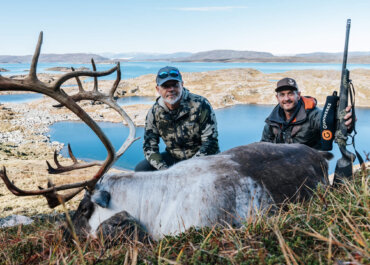These 5 tips to improve your late-season waterfowl hunts come to us from WTA consultant Caleb Sutton.
1. Scouting Waterfowl:
This is huge during all times of the season but especially late in the game. If you are hunting somewhere in the midwest/prairie states where birds utilize fields, I always look for one of two things: major feeding areas or major (what I call) loafing areas. If you find somewhere that is a heavy feeding area it can be great. These areas are usually very easily identified and very obvious, and the hunting here can be exceptional during the first couple hours of the morning or the last couple of hours of legal shooting time in the evening. The only problem is sometimes especially on evening hunts they can enter field in HUGE groups which can make things a little more difficult for you as opposed to birds coming in in smaller groups.
The loafing areas are my personal favorite to hunt this time of year. They are a little tougher to find but when you locate them it can make for great hunting, these are the areas birds tend to rest during the day in between feeds, I have seen them be places where birds like to roost and I have seen them be non roost areas as well. For ducks: I always look for any open water, especially when everything else is locked up. For geese: I have found them on iced over ponds, do-nothing pastures, and bare fields. Occasionally ducks will get into these types of areas with them as well. What is nice about these areas is you catch the birds trickling back in most of the time, so instead of these huge groups you are working groups that are typically anywhere from 2 to 20 in birds. These areas tend to be better mid morning to mid afternoon.
2. Open Water During the Freeze:
This one is pretty self explanatory. If you can find some open water when everything freezes up, it can be incredible for the duck hunting. I look for several different things, some more obvious than others. Warm water spring fed ponds or sloughs always hold piles of birds when stuff locks up. These are some of my favorite things to hunt when it is bitter could out. Augmentation ponds that recirculate ground water can hold LOTS of birds as well, these typically never freeze no matter how cold it is outside. Another obvious one is current, in the Midwest even our rivers and streams that have current freeze, as you move farther south, there can be pockets of open water based on currents even when most other things are frozen, obviously the farther south you go the less likely things will be frozen in general but it can happen.
3. Field hunting Waterfowl:
I am a big believer in field hunting during this time of the year, because it is cold and birds have to feed. Do the homework, find the birds, and it can pay big dividends. There isn’t really a trick to this other than finding the birds and being on the X with a solid-looking decoy spread.
4. Decoy Arrangement:
When it comes to late season decoy tactics, I let the birds dictate what I do. There have been times where I have found them in huge bunches and extremely large groups, when it is like that I beef up my spread. If I think they are looking for a pile of birds to link up with, then I set my decoys accordingly. I find that this is the case more so in field hunts when I am trying to hunt feeding birds. If I find birds that are in smaller groups or little bunches scattered about I will set my spreads to those specifications, and I find that this works out the best when I am hunting the loafing areas that I referred to earlier.
One side note for ducks: with motion decoys, there are times late in the year when I will completely go away from spinning wing decoys. At this point in the game the birds have likely seen hundreds if not thousands of them during their migration. I like to substitute that spinning wing motion with water motion by using a pulsator type decoy, a swimming decoy, or a jerk rig.
5. Calling Ducks and Geese:
I will keep this pretty short and sweet, if you are sitting where the birds already want to be, then be very subtle with your calling. I think a lot of times less is more. There are exceptions to this rule but most of the time being simple and not overdoing it will pay off for you bigly!








